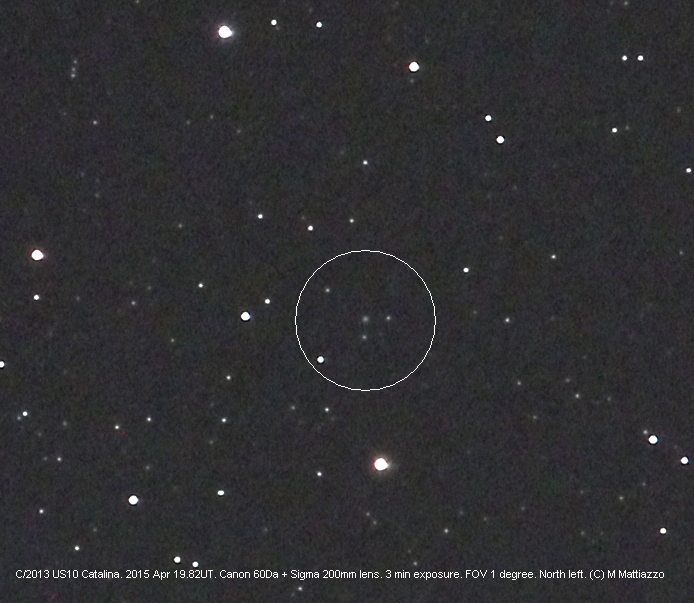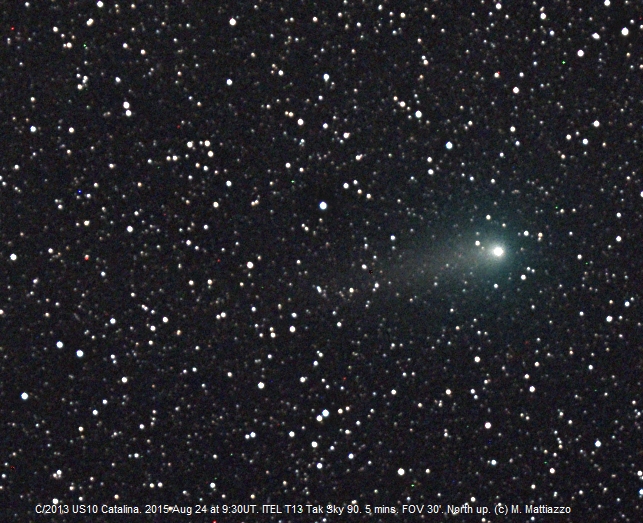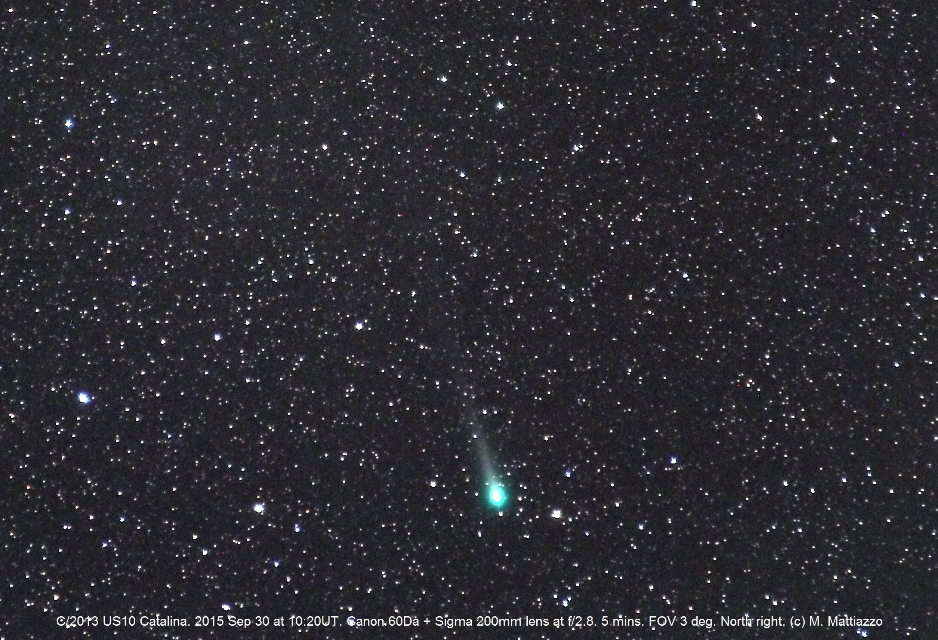
C/201 3US10 was discovered as an asteroid in October 2013 by the Catalina
sky survey, hence the asteroid designation.
It was later shown to be travelling in a retrograde direction
opposite to the planets (inclined 149 degrees to the ecliptic)
as well as in a parabolic orbit (eccentricity =1) more typical of a
comet.
Sure enough, cometary activity was eventually detected.
Catalina is dynamically new, its first visit to the inner solar
system. We know this via its original eccentricity.
It is also intrinsically bright, with a
calculated absolute magnitude of 6.
Catalina had the potential to reach faint naked eye visibility between Oct 2015 to Jan 2016
but fell short of expectation
peaking at magnitude 6 when it arrived at perihelion on 2015
November 15 at a distance of 0.82AU from the Sun.
Unfortunately, this occurred when the comet was on the opposite
side of the Sun.
However, Its retrograde orbit improved the odds
for a close Earth passage, twice in this instance.
On August 14, 2015 the inbound comet passed 1.08AU from the Earth
when it was situated in southern circumpolar skies.
Post perihelion and outbound, a more favourable encounter at 0.72AU
occurred on January 16, 2016 when it was better situated for
northern observers.
Dynamically new comets in general tend to disappoint.
Observations below show the development of the comet.

C/2013 US10 Catalina
2015 Apr 19.82UT: m2=12.7, Dia = 0.5'. DC=8, Canon 60Da + Sigma lens.
[White in appearance - highly condensed]

C/2013 US10 Catalina on 2015 August 8. Visual magnitude 7.5.

At the start of September, the magnitude 7.0 comet
was situated on the Norma Circinus border in the southwest after dusk.
The comet maintained a slow rate of brightening as it receded
from Earth but approached the Sun.
On Sep 7-8, it was within a degree of star cluster NGC5822 in Lupus.
Photo below taken Sep 5.




October 2015 plus night mode chart
As October 2015 began, the magnitude 6.5 comet was situated 4 degrees North of Eta Centauri.
On December 9, the magnitude 6.2 comet was located in Virgo, a few degrees to
the north of Venus, very low in the Eastern morning sky at 4:30am.
Since the comet was heading directly northwards, conditions improved only
gradually as the month progressed.

Image of comet Catalina on 2016 Dec 19 at 11:35UR.
Taken remotely using I-Telescope T20 in New Mexico.
Photo shows ion tail to upper right and dust trail to lower left.
On December 23, the comet was at 7 degrees altitude in the North-eastern
sky, still situated in Virgo, at 0430am.
Moonlight started to interfere after this date.
The comet was heading for an Earth approach of 0.72AU on January 17th,
but situated deep in northern skies by then.


